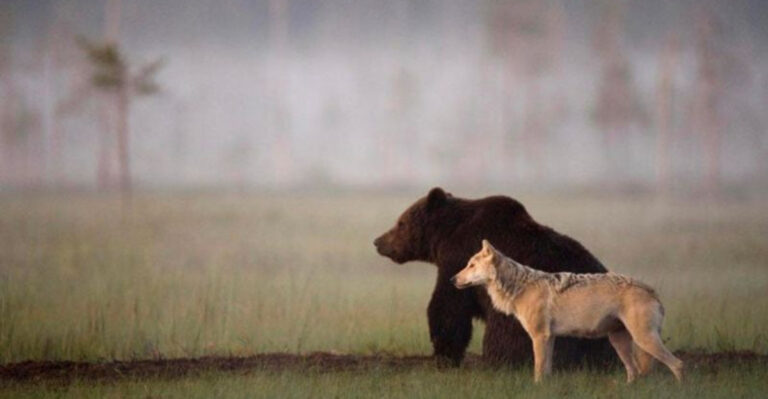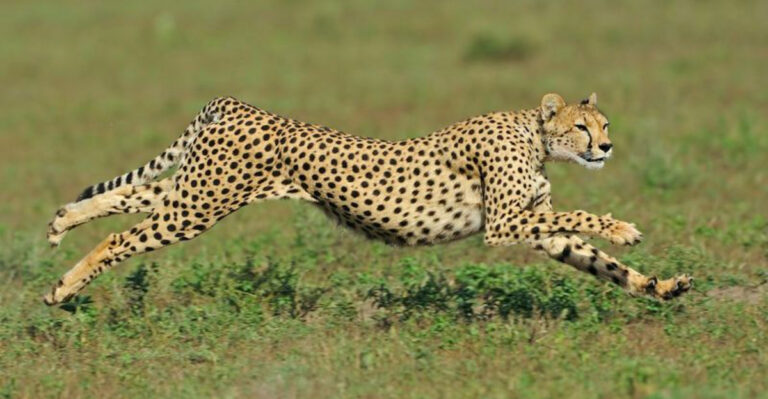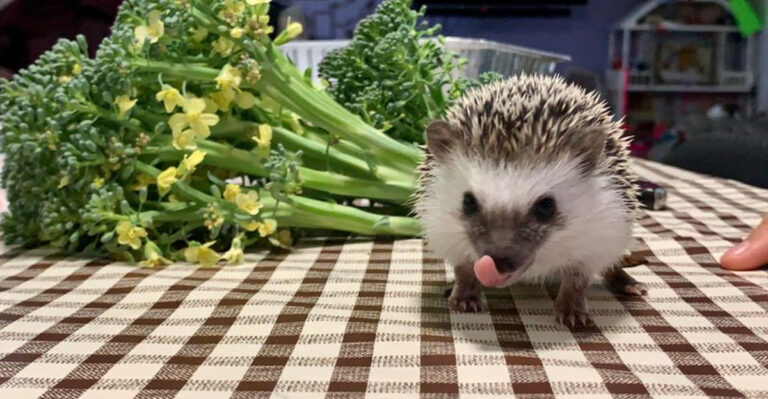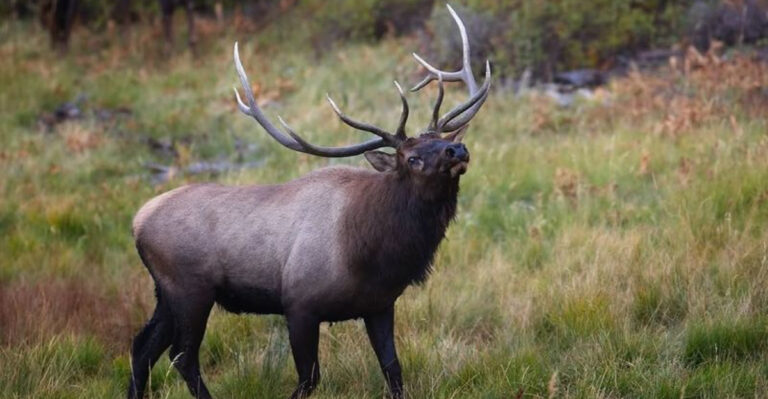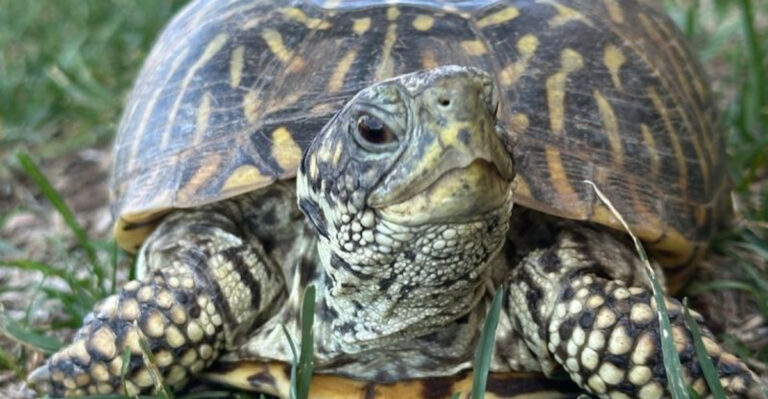11 Unusual Urban Wildlife Species Thriving In America’s Biggest Cities
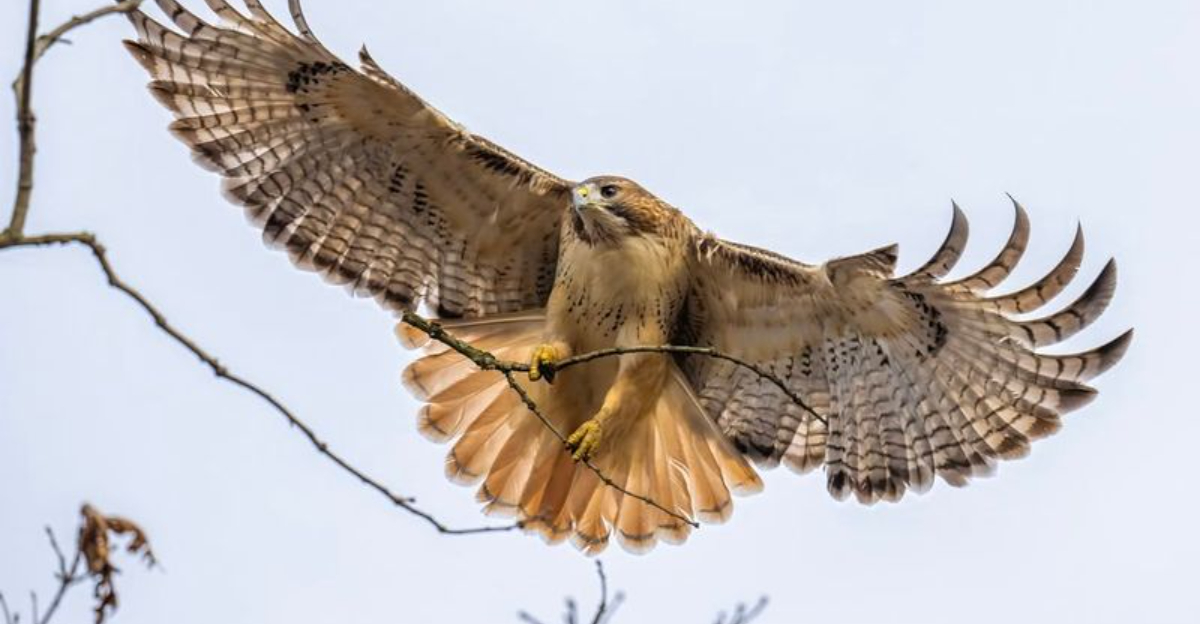
As urban landscapes expand and evolve, they inadvertently create sanctuaries for a host of unexpected wildlife.
Cities like New York, Los Angeles, and Chicago have become bustling havens where unusual creatures not only survive but thrive amid skyscrapers, subways, and sprawling parks.
These urban environments offer unique challenges and opportunities, leading to surprising adaptations and behaviors among these creatures. Today, we’ll explore those fascinating wildlife species that have made America’s biggest cities their home.
1. Peregrine Falcons
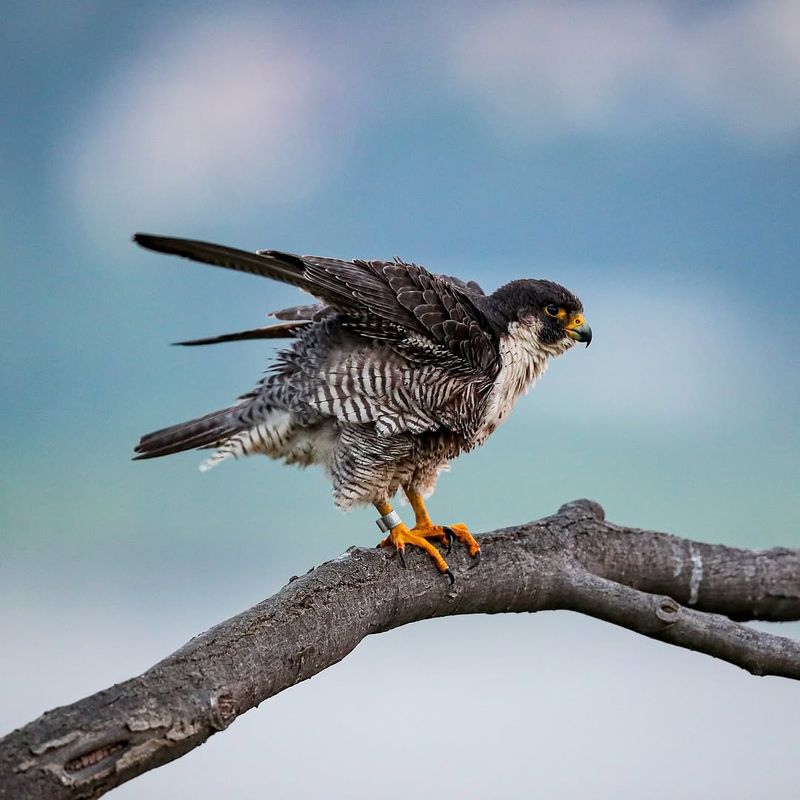
Peregrine Falcons are a testament to nature’s resilience, having adapted spectacularly to urban life. Once endangered, these majestic birds of prey have found an unlikely sanctuary atop the skyscrapers of New York City.
The high-rise buildings mimic the cliffs they naturally nest on, providing a perfect vantage point for hunting pigeons and other city birds. This adaptation has led to a resurgence in their population, a success story for urban wildlife conservation.
Incredible flyers, Peregrines can reach speeds over 240 miles per hour, making them the fastest animals on the planet. Their speed and agility in the air are unmatched, and they use these skills to their advantage in the urban jungle.
Observing a peregrine falcon streak through the sky, executing gravity-defying dives, is an awe-inspiring sight for city dwellers.
Their presence in major cities has also contributed to increased public interest in birdwatching and urban ecology.
By nesting in well-known locations, these birds offer residents a daily glimpse into the wonders of wildlife, sparking curiosity and appreciation for nature amidst the concrete jungle. Peregrine falcons have truly become ambassadors of urban biodiversity.
2. Coyotes
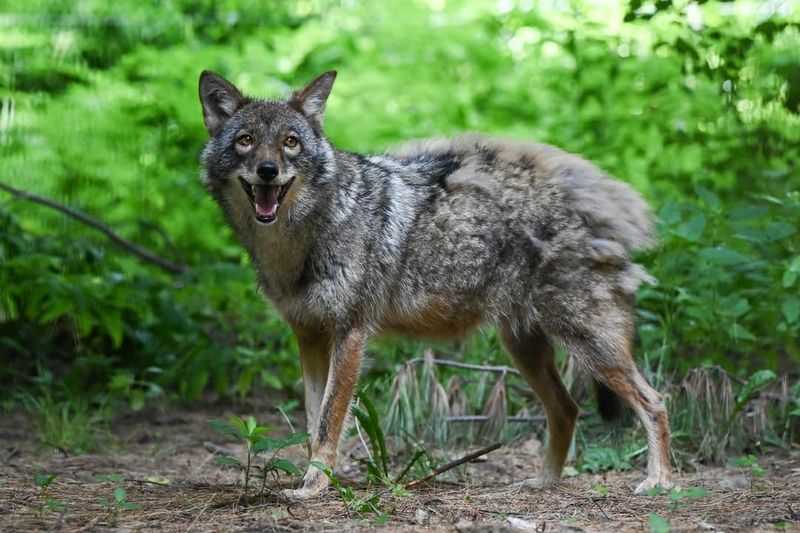
Coyotes have become iconic figures in the urban landscapes of Los Angeles, symbolizing the complex relationship between humans and wildlife. These adaptable creatures have expanded their range into cities, where they cleverly navigate streets, parks, and even highways.
Often seen as a nuisance, coyotes are actually an integral part of the urban ecosystem, controlling rodent populations and contributing to the ecological balance.
Their ability to survive in urban settings is nothing short of remarkable. Coyotes are highly intelligent and resourceful, often seen hunting in packs or scavenging at night when the city is asleep.
They are typically wary of humans, maintaining a safe distance while coexisting in the same environment. This elusive behavior adds an element of mystery and intrigue to their presence in cities.
Despite their adaptability, coyotes face challenges such as traffic, habitat loss, and human-wildlife conflicts. Efforts to educate the public about coexisting peacefully with coyotes are vital.
Understanding these animals and respecting their space can lead to a harmonious relationship where both humans and coyotes thrive. Observing a coyote in an urban setting is a reminder of the wildness that persists, even in the heart of a bustling metropolis.
3. Raccoons
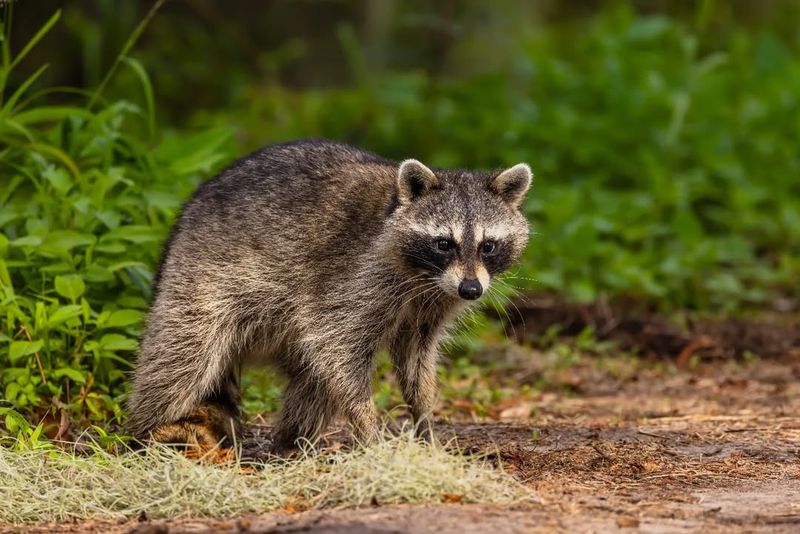
Raccoons are quintessential urban survivors, thriving in cities like Chicago thanks to their ingenuity and adaptability. Known for their masked faces and dexterous paws, raccoons have mastered the art of living in human-dominated landscapes.
They are opportunistic feeders, often seen rummaging through trash cans and dumpsters in search of a meal. This behavior has earned them a reputation as nuisances, but it also highlights their incredible adaptability.
In urban environments, raccoons have learned to navigate complex landscapes, from crossing busy streets to scaling fences and buildings.
Their intelligence allows them to solve problems and overcome obstacles in their quest for food and shelter. Despite their resourcefulness, raccoons face dangers such as traffic and disease, which can impact their populations.
Interestingly, raccoons have become a part of urban folklore, often depicted in stories and media as clever tricksters. They remind city dwellers of the wildlife that coexists in their midst, encouraging a greater appreciation for nature.
By understanding raccoons’ behaviors and taking measures to secure trash and limit food sources, humans can coexist peacefully with these fascinating creatures. Raccoons, with their curious nature and adaptability, embody the spirit of urban wildlife.
4. Red-Tailed Hawks
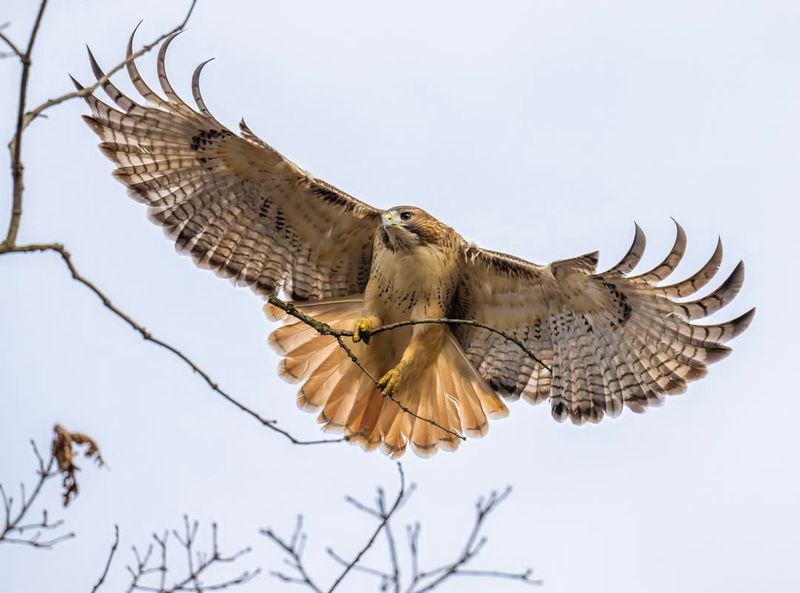
Red-Tailed Hawks are a majestic presence in urban areas, capturing the attention of city dwellers with their impressive wingspans and keen hunting skills.
These birds have found a thriving habitat in cities like New York, where they patrol parks and green spaces in search of prey. Their adaptability to urban environments is a testament to their resilience and ability to coexist with human activity.
These raptors are often seen soaring high above the city, their sharp eyesight allowing them to spot small mammals and birds from great distances.
They have adapted to the urban landscape by nesting in tall buildings and trees, providing them with a strategic advantage for hunting. The presence of Red-Tailed Hawks in cities has sparked interest in birdwatching and conservation efforts, raising awareness about the importance of preserving urban biodiversity.
Their role as top predators helps control rodent populations, contributing to the ecological balance in urban areas. By fostering a greater understanding and appreciation of these magnificent birds, city residents can support conservation efforts and ensure that Red-Tailed Hawks continue to soar over their neighborhoods. These hawks remind us of the beauty and resilience of nature, even amidst the hustle and bustle of city life.
5. Eastern Gray Squirrels
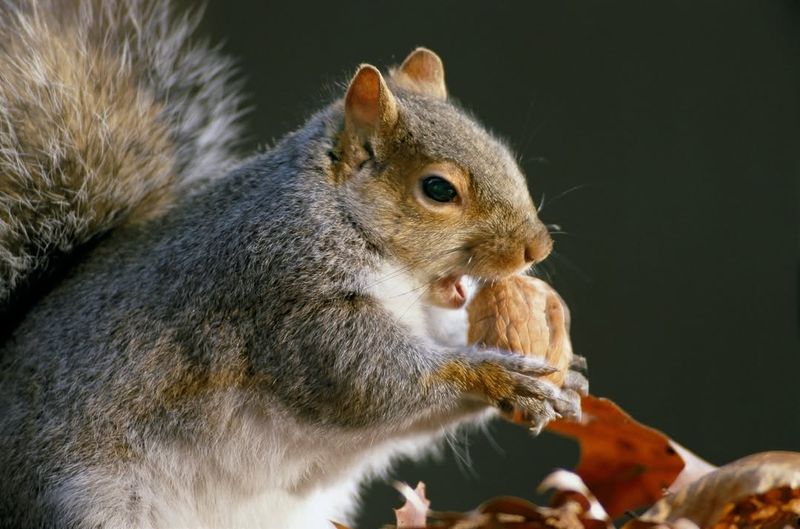
Eastern Gray Squirrels are ubiquitous in urban parks and neighborhoods across America, becoming an integral part of city landscapes.
Known for their bushy tails and playful antics, these squirrels are a favorite among city dwellers, often seen scampering up trees and leaping from branch to branch. Their ability to adapt to urban environments has ensured their success in cities like Boston and beyond.
Squirrels are expert foragers, gathering and storing food for winter months. In cities, they have access to a variety of food sources, from acorns and nuts to birdseed and discarded human food.
Their presence in urban areas provides opportunities for people to connect with nature, offering a daily reminder of wildlife amidst the city’s hustle.
While their playful behavior is endearing, it can sometimes lead to conflicts with humans, particularly when squirrels invade attics or gardens. Nonetheless, they are an important part of the urban ecosystem, contributing to seed dispersal and tree growth.
By appreciating and respecting their role in the city, we can coexist with these delightful creatures. Eastern Gray Squirrels are more than just common residents; they are lively ambassadors of urban wildlife, bringing a bit of nature into our everyday lives.
6. Bats
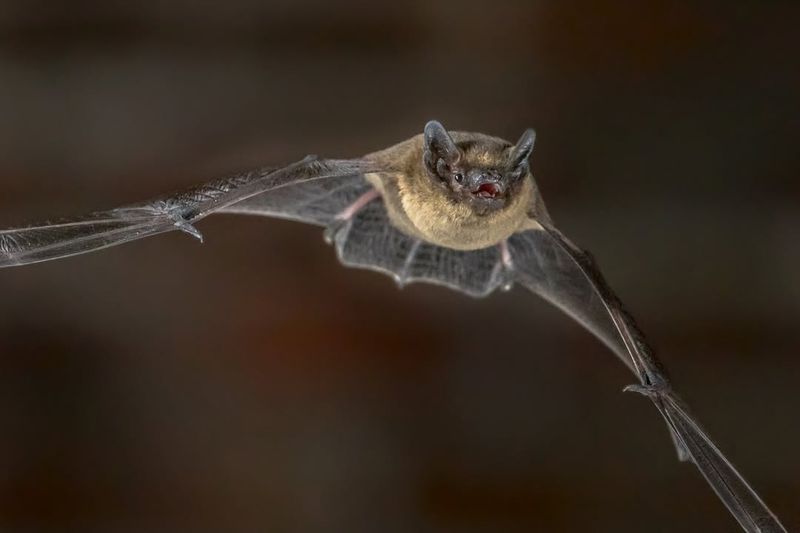
Bats often go unnoticed in urban environments, yet they play a crucial role in maintaining ecological balance. Cities like Austin, Texas, are home to large colonies of bats, which emerge at dusk to feast on insects. These nocturnal creatures are vital for controlling pest populations, providing a natural form of pest management in urban areas.
In Austin, the Congress Avenue Bridge houses one of the largest urban bat colonies in North America. Each evening, thousands of bats take flight, creating a mesmerizing spectacle that draws tourists and locals alike. This natural phenomenon has become a unique attraction, highlighting the importance of preserving urban habitats for wildlife.
Bats face threats such as habitat destruction and disease, making conservation efforts essential. By understanding their ecological role and dispelling myths about bats, we can foster a greater appreciation for these remarkable animals.
Urban bat colonies remind us of the hidden wonders of city life and the vital connections between urban environments and wildlife. Bats are essential allies in maintaining the health of our ecosystems, and their presence in cities is a testament to the richness of urban biodiversity.
7. Opossums
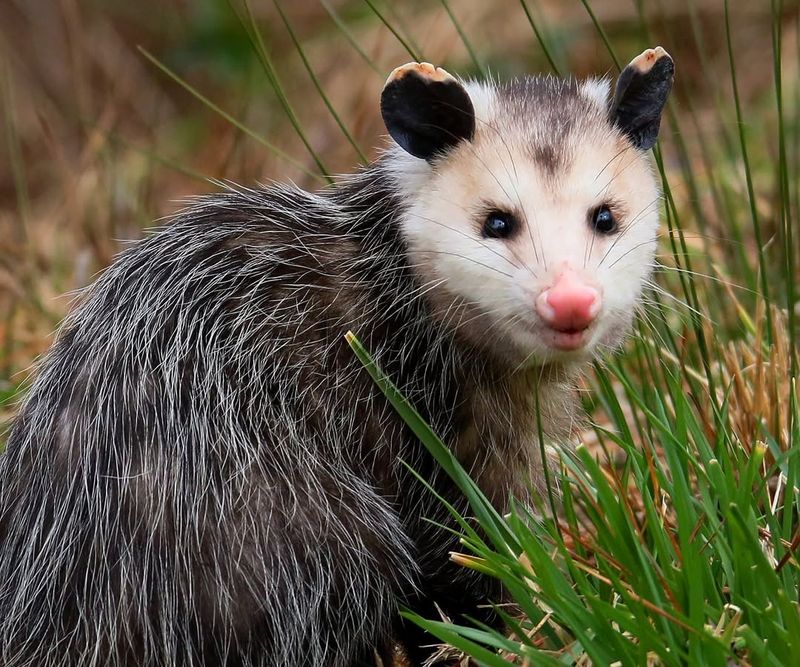
Opossums are often misunderstood creatures that play a beneficial role in urban ecosystems. These marsupials, with their distinctive appearance and nocturnal habits, have become common in cities like Atlanta, Georgia.
As scavengers, opossums help maintain cleanliness by consuming rotting fruit, dead animals, and other organic waste, thus contributing to urban sanitation.
Despite their rat-like appearance, opossums are gentle creatures that pose little threat to humans. They have a remarkable ability to adapt to urban environments, making use of gardens, parks, and even suburban backyards.
Their presence often goes unnoticed due to their nocturnal nature, but they are quietly performing important ecological services.
Opossums also play a role in controlling tick populations, as they groom themselves meticulously and consume large numbers of ticks. This behavior can help reduce the spread of tick-borne diseases, making opossums valuable allies in public health.
Understanding and appreciating opossums can lead to better coexistence with these unique animals. They serve as a reminder of the diverse wildlife that thrives even in the most unexpected urban settings.
8. Red Foxes
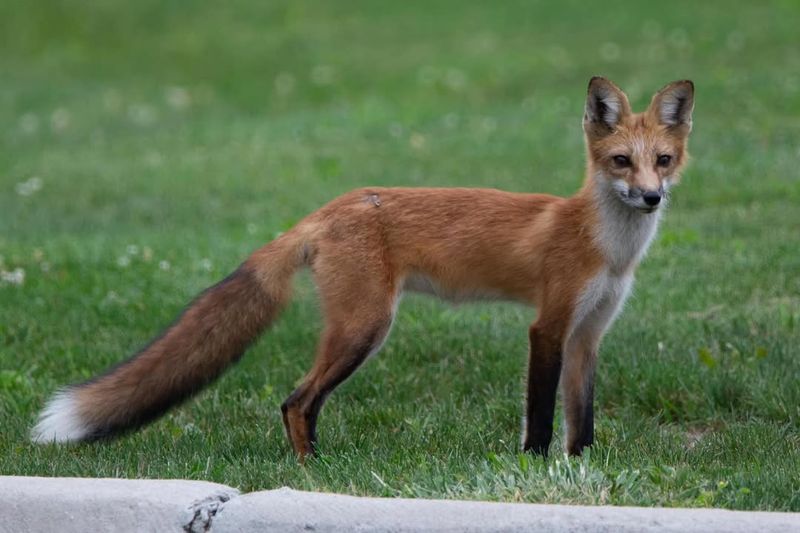
Red Foxes have become urban dwellers in cities like San Francisco, where they navigate the bustling cityscape with surprising ease. Known for their striking red coats and bushy tails, these foxes are both beautiful and elusive, often seen at dawn or dusk.
Their adaptability to urban life is remarkable, allowing them to thrive in environments dominated by humans.
Foxes are skilled hunters, preying on rodents, birds, and even insects, making them an important part of the urban food web. Their presence helps control pest populations, contributing to the ecological balance within cities. Despite their adaptability, foxes face challenges such as habitat fragmentation and human interactions.
Public awareness and education about red foxes can help foster a harmonious relationship with these animals. By respecting their space and observing them from a distance, city residents can enjoy the beauty of red foxes without disrupting their natural behaviors.
These fascinating creatures highlight the resilience of wildlife and the potential for biodiversity to flourish in urban settings. Red Foxes are a captivating presence that adds a touch of wildness to the urban landscape.
9. Monk Parakeets
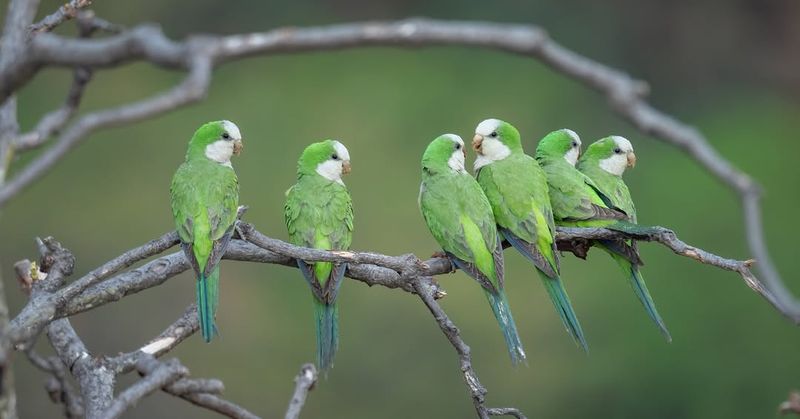
Monk Parakeets, also known as Quaker Parrots, are vibrant additions to the urban wildlife scene in cities like Miami, Florida. These social and highly intelligent birds are easily recognizable by their bright green plumage and playful nature. Native to South America, Monk Parakeets have established thriving colonies in urban areas, adapting well to city life.
One of their most remarkable traits is their ability to build large, communal nests out of sticks. These nests can be found on power lines, trees, and other structures, showcasing their ingenuity and cooperative behavior.
Monk Parakeets are often seen in flocks, chattering loudly and adding a burst of color and sound to the urban environment.
While they are adored by bird enthusiasts, Monk Parakeets can sometimes become a nuisance, particularly when their nesting activities interfere with power lines or other infrastructure. Efforts to manage their populations and mitigate conflicts are crucial to maintaining a balanced coexistence.
These charismatic birds remind us of the vibrant and diverse array of wildlife that can thrive in urban habitats. Monk Parakeets are a testament to the adaptability of species and the dynamic nature of urban ecosystems.
10. Alligators
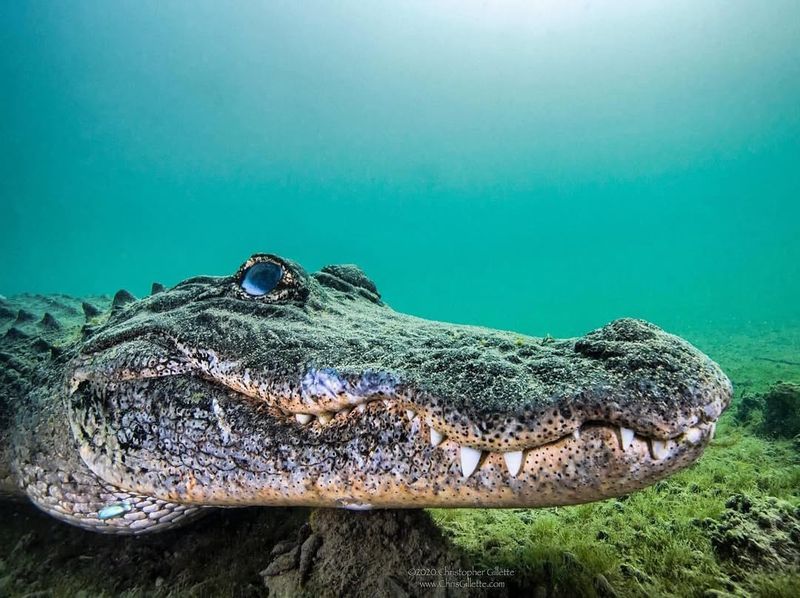
Alligators are perhaps one of the most surprising urban wildlife residents, found in cities like Miami, Florida, where they inhabit canals and waterways.
These ancient reptiles have adapted to urban environments, coexisting with human populations in a delicate balance. Spotting an alligator in the city can be both thrilling and unsettling, a reminder of the wild lurking just beneath the surface.
Alligators play a crucial role in maintaining the health of aquatic ecosystems, controlling fish and turtle populations. They are often seen basking on canal banks or gliding through the water, their presence a testament to the resilience of wildlife in urban settings.
Despite their fearsome reputation, alligator attacks on humans are rare, and they generally avoid contact with people.
Efforts to educate the public about safe interactions with alligators are essential for preventing conflicts and ensuring the safety of both humans and animals.
By respecting these powerful creatures and observing them from a safe distance, urban residents can appreciate the unique wildlife that shares their city. Alligators remind us of the untamed elements of nature that exist even in the heart of urban landscapes.
11. Great Horned Owls
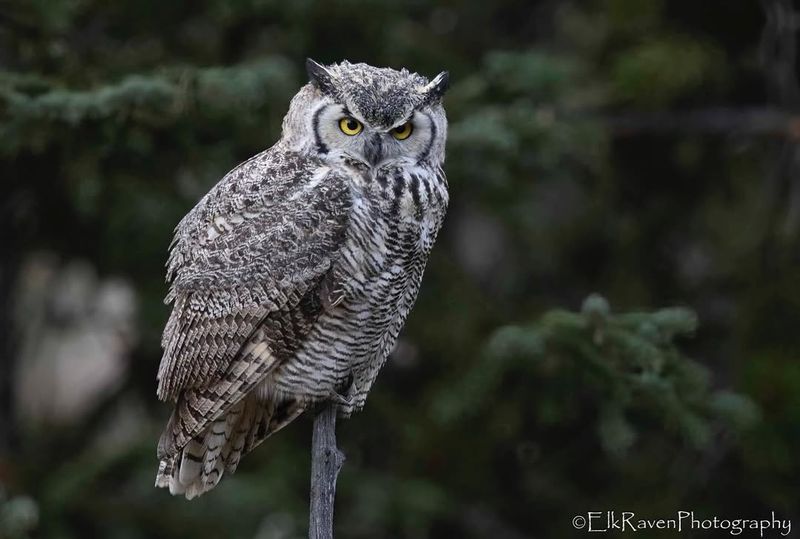
Great Horned Owls are formidable predators that have found a niche in urban areas, including cities like Seattle. Known for their distinctive tufts and haunting calls, these owls are masters of stealth and precision.
They are primarily nocturnal, hunting rodents, birds, and even small mammals under the cover of darkness. Their presence in cities contributes to controlling pest populations, making them vital players in urban ecosystems.
These owls have adapted to urban environments by nesting in parks, cemeteries, and other quiet areas where they can remain undisturbed. Their ability to thrive in cities is aided by their impressive adaptability and keen hunting skills.
Observing a Great Horned Owl in an urban setting is a rare and magical experience, offering a glimpse into the nocturnal wildlife that thrives alongside us.
Conservation efforts are important to ensure the continued presence of Great Horned Owls in urban habitats. By creating and preserving green spaces, city planners can support these magnificent birds and other wildlife.
The Great Horned Owl symbolizes the wildness that persists in urban areas, reminding us of the rich biodiversity that can flourish in cities.


